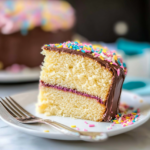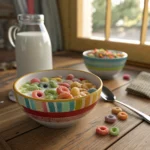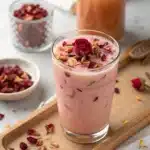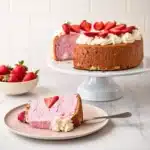Cupcakes lactose free aren’t just a trend—they’re a delicious solution for anyone avoiding dairy, whether due to lactose intolerance, dietary choice, or a lifestyle shift. In this guide, we’ll explore how to bake rich, fluffy cupcakes without milk, cream, or butter. You’ll discover the best dairy-free alternatives, tips for texture and flavor, shelf life, and answers to the most common questions like “Can lactose-intolerant people eat cupcakes?” and “What if you skip milk altogether?”
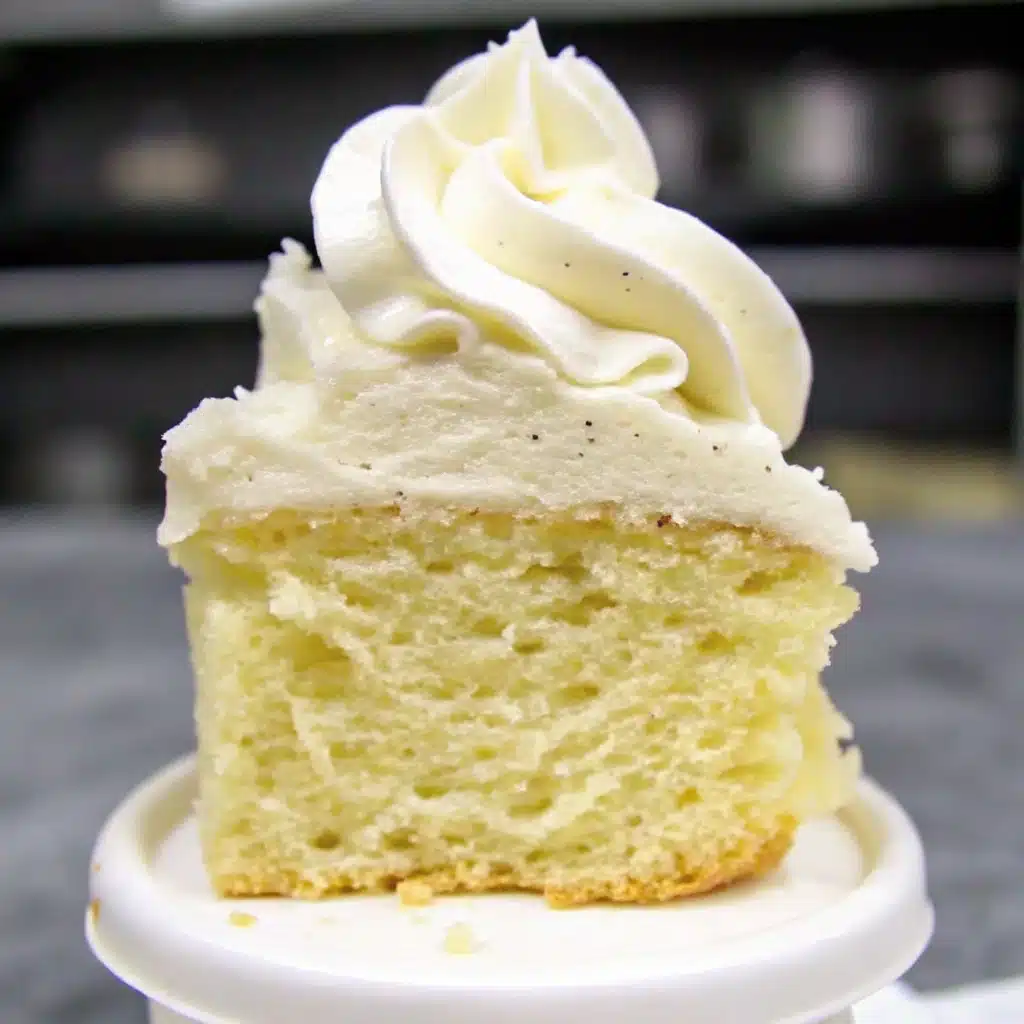
In this article, I’ll walk you through everything I’ve learned about cupcakes lactose free—not just recipes, but the science, flavor, and joy behind each bite.
Table of Contents
Understanding Cupcakes Without Lactose
– What Does “Lactose-Free” Mean in Baking?
When you hear the phrase cupcakes lactose free, it means you’re enjoying cupcakes that are made without lactose, the sugar found in milk and most dairy products. Traditional cupcake recipes typically call for milk, butter, or yogurt—all of which contain lactose. But today’s dairy-free baking scene is full of tasty substitutes.
In cupcakes lactose free recipes, dairy ingredients are swapped with plant-based versions such as almond milk, soy yogurt, or coconut cream. These swaps retain the softness, rise, and richness of standard cupcakes while making them gentler on your stomach.
It’s important to understand the difference between lactose-free and dairy-free:
| Label Type | Contains Dairy? | Contains Lactose? | Suitable for Lactose Intolerant? |
|---|---|---|---|
| Lactose-Free | Possibly | No | Yes |
| Dairy-Free | No | No | Yes |
| Vegan | No | No | Yes |
So yes, cupcakes lactose free may still contain dairy-derived ingredients like casein, but they’re safe for those avoiding lactose itself. If you need 100% dairy-free or vegan cupcakes, make sure to check labels or stick to plant-based recipes.
Print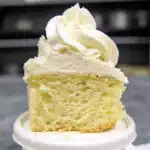
Cupcakes Lactose Free
- Total Time: 35 minutes
- Yield: 12 cupcakes 1x
Description
Deliciously soft and fluffy cupcakes made without any dairy—perfect for those with lactose intolerance or on a dairy-free diet.
Ingredients
- 1 1/2 cups all-purpose flour
- 1 teaspoon baking powder
- 1/2 teaspoon baking soda
- 1/4 teaspoon salt
- 1/2 cup vegetable oil
- 3/4 cup sugar
- 2 large eggs
- 1 teaspoon vanilla extract
- 1/2 cup almond milk or other lactose-free milk
- Lactose-free frosting or coconut whipped cream (optional)
Instructions
- Preheat oven to 350°F (175°C) and line a muffin tin with cupcake liners.
- In a bowl, whisk together flour, baking powder, baking soda, and salt.
- In another bowl, mix oil and sugar until combined, then beat in eggs and vanilla.
- Add dry ingredients alternately with almond milk, mixing until just combined.
- Divide the batter evenly into liners, filling each about 3/4 full.
- Bake for 18–22 minutes or until a toothpick inserted in the center comes out clean.
- Cool completely before frosting if desired.
Notes
Top with fresh fruit or a sprinkle of powdered sugar if you prefer to keep it light and simple.
- Prep Time: 15 minutes
- Cook Time: 20 minutes
- Category: Dessert
- Method: Baking
- Cuisine: American
Nutrition
- Serving Size: 1 cupcake
- Calories: 190
- Sugar: 14g
- Sodium: 130mg
- Fat: 8g
- Saturated Fat: 1g
- Unsaturated Fat: 6g
- Trans Fat: 0g
- Carbohydrates: 27g
- Fiber: 1g
- Protein: 3g
- Cholesterol: 30mg
– Why Go Dairy-Free? Health and Lifestyle Benefits
Opting for cupcakes lactose free brings benefits beyond easing lactose intolerance. It opens the door to healthier, lighter treats that fit into a variety of lifestyles.
Health-conscious individuals often choose dairy-free baking to reduce saturated fat and support digestive health. Swapping out butter and milk for coconut oil or almond milk helps keep the cupcake moist without overloading your body.
People with milk allergies or intolerances can enjoy baked goods confidently with cupcakes lactose free, avoiding the discomfort that comes from hidden dairy.
Plant-based lifestyles also benefit from dairy-free baking. These recipes align with vegan values while reducing environmental impact, since producing dairy consumes more water and energy than plant alternatives.
And the best part? These cupcakes don’t compromise on flavor. They’re soft, indulgent, and every bit as delightful as traditional dairy cupcakes.
Looking for inspiration? Try our romantic chocolate and strawberry cupcakes—they’re a perfect example of indulgence without dairy.
Ingredients
– Dairy Alternatives for Baking Moist Cupcakes
Creating delicious cupcakes lactose free starts with smart substitutions. The secret? Using the right plant-based ingredients that mimic the texture, richness, and flavor of dairy. Whether you’re a seasoned vegan baker or just testing the waters, there are plenty of easy swaps available at any grocery store.
Plant-Based Milks:
- Almond milk: Light and slightly nutty, great for vanilla or fruity cupcakes.
- Oat milk: Creamier texture, works well in chocolate or coffee-flavored cupcakes.
- Soy milk: Closest in protein content to dairy milk, which helps with structure.
- Coconut milk: Ideal for tropical flavors—try it in lime or pineapple cupcakes!
Butter Replacements:
- Vegan butter: Brands like Earth Balance work cup-for-cup in most recipes.
- Coconut oil: Adds a subtle coconut taste—great with chocolate.
- Avocado or applesauce: For oil-free or lower-fat versions of cupcakes without lactose.
Using these ingredients not only keeps your cupcakes safe for lactose-intolerant guests but also adds new layers of flavor. Many home bakers find that once they make the switch, they don’t miss dairy at all.
Need proof? Check out our vegan chocolate cake recipe—it’s 100% dairy-free and wildly moist.
– How to Choose the Right Plant-Based Milk and Butter
Not all dairy alternatives are created equal. If you want your cupcakes lactose free to rise beautifully and hold their moisture, ingredient balance is key.
Here’s a quick guide to picking your milk and butter substitutes:
| Use Case | Best Plant Milk | Best Fat Replacement |
|---|---|---|
| Light, fluffy texture | Almond or soy milk | Vegan butter |
| Rich, moist crumb | Oat or coconut milk | Coconut oil |
| Low-calorie option | Unsweetened almond | Applesauce (1:1 ratio) |
| Allergy-friendly baking | Rice or flax milk | Avocado or neutral oil |
Tips for choosing ingredients:
- Always pick unsweetened and unflavored milks unless your recipe calls for sweetness.
- Don’t overmix batter when using non-dairy milks; the structure is more delicate.
- Look for “baking sticks” when using vegan butter—they’re formulated for texture.
Adding richness without dairy can be easy and delicious. Many who taste cupcakes lactose free made with the right ingredients never know they’re missing milk or butter.
Discover great ideas like these strawberry cupcakes with strawberry filling, a lactose-free favorite bursting with flavor.
The Best Lactose-Free Cupcake Recipes
– Classic Vanilla Lactose-Free Cupcakes Recipe
Vanilla cupcakes are timeless, and luckily, you don’t need dairy to enjoy them. This cupcakes lactose free recipe delivers all the flavor and fluffiness you expect—with zero milk, butter, or cream.
Ingredients:
- 1 ½ cups all-purpose flour
- ¾ cup granulated sugar
- ½ tsp baking soda
- 1 tsp baking powder
- ¼ tsp salt
- ¾ cup unsweetened almond milk (or oat milk)
- ⅓ cup melted coconut oil or vegan butter
- 1 tbsp apple cider vinegar
- 1 tbsp vanilla extract
Instructions:
- Preheat oven to 350°F and line your muffin tin.
- In a large bowl, mix all dry ingredients.
- In a separate bowl, combine wet ingredients. Pour into dry mix.
- Stir until just combined. Do not overmix.
- Fill liners ¾ full and bake for 18–20 minutes.
- Let cool before frosting.
These vanilla cupcakes lactose free bake up light, airy, and softly golden—perfect topped with dairy-free buttercream or a sprinkle of powdered sugar.
Need something extra moist? Discover great ideas like vegan and gluten-free cupcakes for more inspiration.
– Rich and Moist Chocolate Dairy-Free Cupcakes
Chocolate lovers, rejoice—you don’t need cream or butter to get deep, fudgy flavor. These cupcakes lactose free combine cocoa and oil to create a rich flavor and tender, moist crumb.
Ingredients:
- 1 cup flour
- ⅓ cup unsweetened cocoa powder
- ¾ tsp baking soda
- ½ tsp baking powder
- ¼ tsp salt
- ¾ cup plant milk (oat or soy recommended)
- ½ cup brown sugar
- ¼ cup oil (coconut or vegetable)
- 1 tsp vanilla extract
- 1 tsp apple cider vinegar
Instructions:
- Preheat oven to 350°F and prepare cupcake liners.
- Whisk together dry ingredients.
- Mix wet ingredients in a separate bowl.
- Combine wet and dry gently until smooth.
- Fill cupcake liners ⅔ full and bake for 15–18 minutes.
- Let them cool completely before frosting or decorating.
This recipe creates indulgent cupcakes that no one will guess are dairy-free. They’re perfect for birthdays, potlucks, or a solo treat-yourself moment.
Check out our labubu cake if you’re into quirky, layered, dairy-free dessert ideas that stand out on any dessert table.
Want to experiment further? Our readers also love vegan chocolate cake for its deeply satisfying flavor and moist texture—without a drop of dairy.
Don’t miss our vanilla cake recipe—you can adapt it for cupcakes lactose free by simply dividing the batter into cupcake liners and reducing the bake time.
Tips for Baking the Perfect Lactose-Free Cupcake
– Avoiding Common Mistakes in Dairy-Free Baking
Baking cupcakes lactose free isn’t rocket science—but it does take some practice. Whether you’re new to dairy-free desserts or just want to level up, these common pitfalls can ruin a good bake.
Mistake 1: Overmixing the batter
Non-dairy batters are more delicate. Stir until just combined. Overmixing can lead to dense cupcakes.
Mistake 2: Using sweetened plant milk
Always choose unsweetened, unflavored plant milk. Sweetened versions may alter the cupcake’s balance and result in an overly sugary flavor.
Mistake 3: Choosing the wrong fat
Not all oils behave the same in baking. Coconut oil adds richness, but it can solidify if your ingredients are too cold. Room temp is best.
Mistake 4: Skipping acidity
A splash of vinegar or lemon juice helps activate baking soda, especially important in cupcakes lactose free since they often lack buttermilk. This creates fluffier cupcakes.
Mistake 5: Incorrect baking time
Cupcakes made without dairy may bake faster. Keep an eye on the oven and do a toothpick test around 15 minutes in.
Check out our strawberry cupcakes with strawberry filling—they use fruit and dairy-free milk for extra moisture and flavor.
– Moisture, Texture & Rise: The Role of Replacements
One of the biggest concerns when making cupcakes lactose free is achieving the same softness, crumb, and rise that dairy offers. Luckily, you can mimic these traits with smart substitutes.
| Baking Role | Dairy Ingredient | Lactose-Free Replacement | Notes |
|---|---|---|---|
| Moisture | Milk | Oat milk, almond milk | Adds moisture and binds dry ingredients |
| Richness | Butter | Vegan butter, coconut oil | Maintains fat content for richness |
| Rise | Buttermilk | Soy milk + vinegar | Activates leaveners like baking soda |
| Binding | Yogurt | Applesauce, flax egg | Helps cupcakes hold together without eggs or dairy |
Pro tip: Always warm your plant milk slightly before mixing—it helps with blending and ensures a smoother batter.
Your goal is to balance fat and moisture while keeping the cupcake light. With the right combo of ingredients, no one will guess your cupcakes are lactose free.
Looking for more creativity in your baking? Be sure to try our vegan and gluten-free cupcakes—crafted for the perfect balance of softness, structure, and allergy-friendly ingredients.
Creative Frostings for Lactose-Free Cupcakes
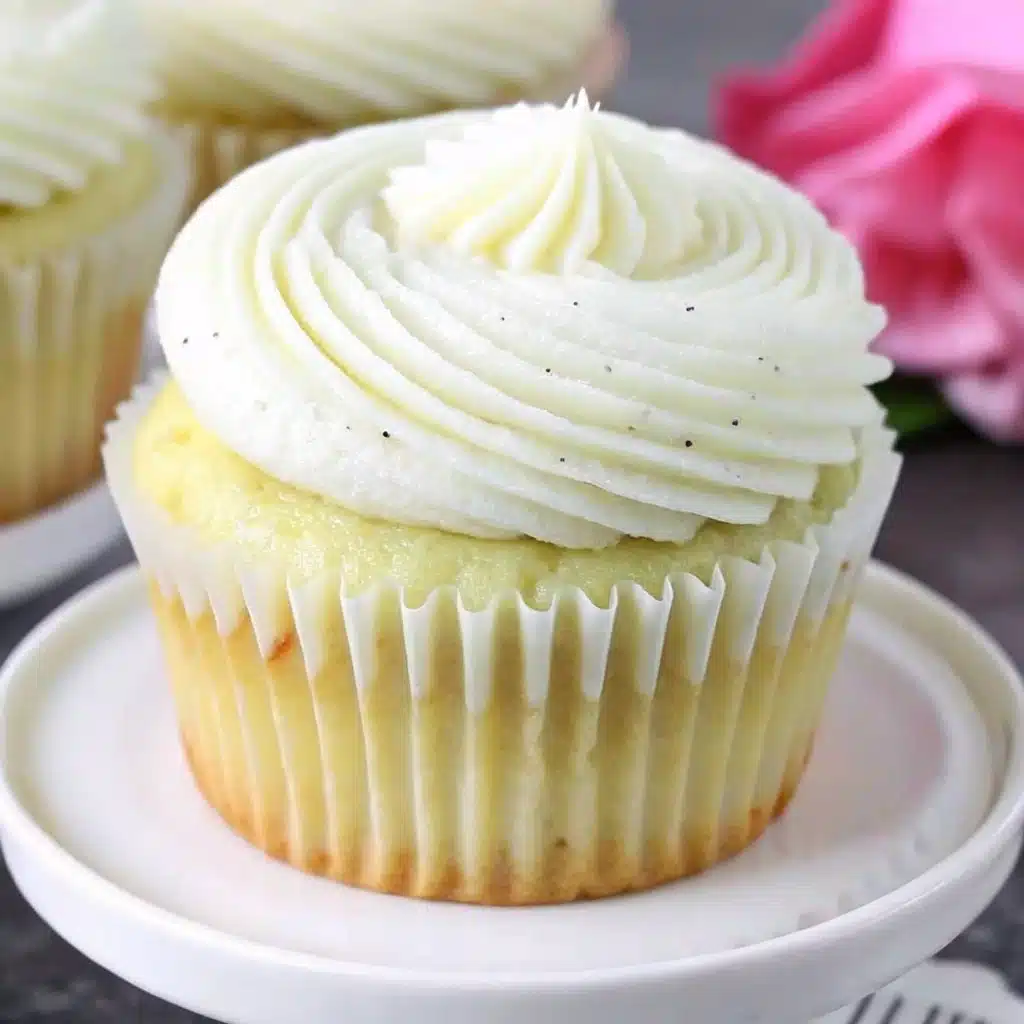
– Dairy-Free Buttercream and Whipped Toppings
No cupcake is complete without a dreamy topping. But when making cupcakes lactose free, the frosting matters just as much as the cake. The good news? You can whip up indulgent, fluffy toppings without a drop of dairy.
Lactose-Free Frosting Options:
| Frosting Type | Key Ingredients | Texture / Flavor Notes |
|---|---|---|
| Vegan Buttercream | Vegan butter + powdered sugar + almond milk | Light, pipeable, classic bakery-style |
| Coconut Whipped Cream | Chilled coconut cream + vanilla + sugar | Airy, melts in the mouth, tropical |
| Chocolate Avocado Mousse | Ripe avocado + cocoa + maple syrup | Thick, fudgy, nutrient-rich |
| Cashew Cream Frosting | Soaked cashews + lemon juice + syrup | Tangy, creamy, spreadable |
Here’s a go-to recipe for dairy-free vanilla buttercream:
- ½ cup vegan butter
- 2 cups powdered sugar
- 1–2 tablespoons almond milk
- 1 teaspoon vanilla extract
Instructions:
- Beat vegan butter until fluffy.
- Slowly add powdered sugar.
- Gradually add milk, one tablespoon at a time, until the mixture is smooth and easy to spread.
- Mix in vanilla. Pipe or spread on fully cooled cupcakes lactose free.
Want a frosting with real flair? Don’t miss our romantic chocolate and strawberry cupcakes, which use dairy-free strawberry buttercream for a punch of color and taste.
– Natural Flavor Ideas: From Berries to Coconut
Dairy-free doesn’t have to mean flavor-free. There are tons of ways to naturally elevate your lactose-free cupcakes using whole ingredients and creative combos.
Topping Ideas for Cupcakes Lactose Free:
- Fruit purées: Add strawberry, raspberry, or mango purée to your frosting base for a fresh burst.
- Citrus zest: Lemon, lime, or orange zest brightens vanilla or coconut bases.
- Spices: Try cinnamon, nutmeg, or cardamom in both the cake and frosting.
- Nut butters: Swirl almond or peanut butter into frosting or use it as a drizzle.
These natural options are especially helpful when baking for kids or health-conscious friends who want a lighter treat.
Looking for inspiration? Check out our vegan chocolate cake—its ganache-style coconut topping is pure indulgence without the dairy.
Gluten-Free and Lactose-Free: Double the Free, Double the Fun
– Combining Lactose-Free and Gluten-Free Diets
Following a gluten-free and dairy-free lifestyle doesn’t mean giving up your favorite baked treats. In fact, cupcakes lactose free can be made completely gluten-free without sacrificing flavor, texture, or satisfaction. With the right mix of ingredients, you’ll have cupcakes that are moist, fluffy, and 100% allergy-friendly.
People often assume going gluten-free means dry, crumbly desserts. Not true. The secret is using a blend of alternative flours and enough moisture-retaining ingredients, like applesauce or non-dairy yogurt, to keep the crumb tender.
Here’s how to approach the double-free challenge:
- Choose a high-quality gluten-free flour mix that includes xanthan gum or guar gum for structure.
- Use moisture-boosting ingredients like banana, mashed sweet potato, or flaxseed meal.
- Mix gently—overworking gluten-free batters leads to dense results.
Don’t miss our vegan and gluten-free cupcakes for a foolproof recipe that’s already free from both dairy and gluten!
– Best Flours to Use for Tender, Allergy-Friendly Cupcakes
Not all gluten-free flours are created equal. When you’re making cupcakes lactose free and gluten-free, it’s vital to use a mix that mimics the softness of wheat-based bakes.
Top Gluten-Free Flours for Cupcakes:
| Flour Type | Best For | Texture Outcome |
|---|---|---|
| Almond Flour | Adds moisture, nutty taste | Rich and dense crumb |
| Oat Flour | Subtle flavor, fiber-rich | Soft, fluffy texture |
| Brown Rice Flour | Base for flour blends | Neutral, needs structure help |
| Sorghum Flour | Protein boost | Binds well with starches |
| Coconut Flour (small amounts) | Extra fiber, low-carb | Absorbs moisture—use sparingly |
For best results, use a gluten-free flour blend specifically labeled for baking. These blends typically include the right ratio of flours, starches, and binding agents to deliver light, airy cupcakes.
When paired with non-dairy milk, oils, and egg substitutes, these flours help produce cupcakes lactose free that even traditional cupcake lovers will rave about.
Discover great ideas like our vanilla cake recipe and adapt them with gluten-free flour for a double-free dessert everyone can enjoy.
Storing and Preserving Lactose-Free Cupcakes
– How Long Do Dairy-Free Cupcakes Stay Fresh?
One of the most frequent questions bakers ask is: How long do cupcakes lactose free stay good? The answer depends on your storage method, the ingredients used, and whether or not they’re frosted.
Here’s a general guideline:
| Storage Method | Shelf Life | Notes |
|---|---|---|
| Room Temperature | 2–3 days | Best for unfrosted cupcakes |
| Refrigerator | 5–6 days | Helps preserve moisture and toppings |
| Freezer | Up to 3 months | Wrap individually and thaw before use |
Room temperature is fine if you’re planning to eat your lactose-free cupcakes within a couple of days—especially if they’re unfrosted. Keep them in an airtight container to avoid drying out.
If your cupcakes contain fruit fillings, non-dairy whipped cream, or coconut-based frostings, store them in the fridge. They’ll retain moisture and structure better this way.
Freezing Tips:
- Cool cupcakes completely before freezing.
- Wrap each cupcake in plastic wrap, then store in a freezer-safe container.
- To enjoy, thaw at room temp for 1–2 hours or warm slightly in the microwave.
Looking for make-ahead ideas? Try our vegan chocolate cake—it freezes beautifully and makes for perfect last-minute desserts when adapted to cupcakes.
– Best Storage Methods: Fridge vs. Room Temp
For optimal flavor and freshness, choosing between refrigeration and room temperature depends on your frosting and fillings. Here’s how to store cupcakes lactose free like a pro:
- Use the fridge for cupcakes with plant-based whipped toppings, dairy-free ganache, or fruit compotes.
- Avoid the fridge for cupcakes with high oil content or coconut flour—they may firm up too much.
- Room temp is best for basic unfrosted cupcakes or those frosted with vegan buttercream.
Pro Tip: Always bring refrigerated cupcakes to room temperature 30 minutes before serving. This helps restore the soft texture and enhances the flavors, especially in coconut- or cocoa-based recipes.
Want cupcakes that last longer and taste fresher? Check out our labubu cake, which includes preservation tips for layered bakes and lactose-free ingredients.
Cupcakes for Everyone: Serving Lactose-Free at Events
– How to Serve to Guests with Allergies or Intolerances
Planning a party or event where guests have food restrictions? Choosing cupcakes lactose free is a thoughtful and crowd-pleasing way to accommodate everyone—without sacrificing taste or presentation.
Whether it’s a birthday party, wedding, baby shower, or school celebration, these cupcakes can be the star of your dessert table. The key is to make sure your dairy-free cupcakes are clearly labeled and, ideally, made with cross-contamination in mind.
Tips for Serving Cupcakes Lactose Free at Events:
- Label everything clearly: Use tent cards with “lactose-free” or “dairy-free” indicators.
- Bake or buy in batches: Keep separate from dairy-based desserts to avoid mix-ups.
- Use allergy-safe liners and toppings: Colored liners or flags help guests identify their treats.
- Offer a variety: Provide different flavors—like vanilla, chocolate, and fruit-infused—to appeal to all tastes.
Want visual flair? Don’t miss our strawberry cupcakes with strawberry filling—they’re perfect for baby showers, brunches, and spring events.
– Kid-Friendly and Party-Worthy Dairy-Free Cupcakes
Kids with allergies or lactose intolerance shouldn’t have to feel left out. These cupcakes lactose free are soft, sweet, and easy to decorate with fun, allergy-safe toppings. You can even turn them into an activity by letting children add their own frostings and sprinkles.
Kid-Approved Decorating Ideas:
- Dairy-free chocolate chips or fruit gummies
- Colorful sprinkles (make sure they’re allergen-free)
- Frosting piping stations with coconut whipped cream
- Fruit slices like strawberry, kiwi, or banana for natural topping fun
These cupcakes are safe for nut-free schools (if you avoid nut milks), and you can customize them to match any party theme with simple food coloring or edible toppers.
Looking for inspiration? Don’t miss our romantic chocolate and strawberry cupcakes—just tone down the romance and boost the sprinkles for kid parties!
Conclusion
Choosing cupcakes lactose free doesn’t mean sacrificing flavor, texture, or joy. Whether you’re baking from scratch, buying from a local bakery, or ordering online, there are more options than ever before for people with lactose intolerance—or anyone simply avoiding dairy.
By using the right plant-based ingredients and smart baking techniques, you can enjoy cupcakes that are soft, moist, and absolutely satisfying. From kid-friendly party treats to elegant gourmet desserts, lactose-free options are here to stay—and they’re delicious.
Looking for more inspiration? Don’t miss our top-rated vegan chocolate cake—a reader favorite that proves you don’t need dairy to bake something amazing.
Fore more recipes follow me in Facebook, medium and Pinterest
FAQs
How long do dairy-free cupcakes last?
Dairy-free cupcakes typically stay fresh for 2 to 3 days at room temperature when stored in an airtight container. If you refrigerate them, they can last up to 5–6 days, though it’s best to bring them back to room temperature before serving for optimal texture. For longer storage, you can freeze them for up to 3 months—just wrap each one individually and thaw as needed.
Can people who are lactose intolerant eat cupcakes?
Yes, but only if the cupcakes are made without lactose. Traditional recipes often use milk, butter, or cream—all of which contain lactose. People with lactose intolerance should look for cupcakes lactose free or labeled as “dairy-free.” Using plant-based ingredients ensures that they’re safe and easier to digest.
What happens if you don’t put milk in cupcakes?
If you skip milk without a replacement, your cupcakes may turn out dry or dense. However, using plant-based alternatives like almond, oat, or soy milk keeps them soft and flavorful. These substitutes provide the moisture and structure that dairy usually contributes, making them essential in lactose-free recipes.

